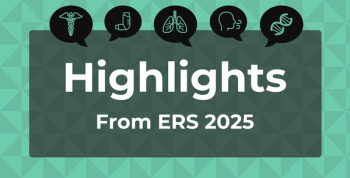
Advancing Myasthenia Gravis Treatment Access and Management
Experts discuss personalized myasthenia gravis treatment, emphasizing patient education and engagement for optimal care and advocacy in managing this variable disease.
Personalizing treatment for
They discuss
Revisit
This transcript was lightly edited for clarity.
The American Journal of Managed Care® (AJMC®): Will it be possible one day to predict patient response to enable a more personalized and effective MG treatment selection process?
Stein: I think as we understand the immunopathologic basis of MG, we're able to establish and understand patient characteristics. Subtypes are developed based on the pathogenic mechanism at the neuromuscular junctions, antibody-mediated, and understanding those targets, and understanding the antibody involved in each patient can help us establish which patients are going to respond to which targeted therapy. These MG subgroups are based on antibody status, histopathology of thymoma, age of onset of symptoms, and muscular involvement. Understanding where our patients are within those subgroups will help us choose the correct targeted therapy for that patient. Once you can attain and understand which therapy is best for that patient, you'll be able to follow them and determine which patients are going to respond better. You can personalize and tailor their care based on understanding their subgroup and using precision medicine to lead to more effective treatment.
Bhavaraju-Sanka: I agree with Dr. Stein. I think we know that different antibodies work differently at the neuromuscular junction, and knowing how their mechanism of action is and targeting that specific action is what we can do with selecting the treatments. But we also need to put in the patient comorbidities. There are certain comorbidities that make them not the right candidate for certain therapies, so I think that also needs to be put in the equation to create or to predict what they can respond to based on available literature from the studies and what they may not respond to. What adverse effects they may have based on their comorbidities is how we can make it more precision care.
AJMC: With the increasing complexity of treatment, what are the most effective strategies to ensure patients remain engaged in their care?
Stein: The most effective strategy is education, partnering with our patients and educating them about MG, about the underlying pathophysiology, about the immune basis of the disease, and to understand that it is immune-mediated and that it can fluctuate. It's characterized by fluctuating symptoms and a variable disease course, and understanding that through education is the only way to understand how to treat them better and for them to understand their risks of medication, the risks of administration, and integrating that education into available treatment options, and deep discussion.
Bhavaraju-Sanka: I agree completely, education of the patient, but we also need to educate the caretaker. Sometimes the patient may be getting into a situation of crisis, and the caretaker needs to be the person who's making that decision, so there has to be education of the caretaker, and sometimes educating other health care providers who are involved in the patient care, because they may be giving medications that are not right for these patients. Education is really important, and we need to let the patient know that they are their own best advocates. They need to advocate for their symptoms, their care, so we can help them get to minimal symptom expression in most of these patients.
Newsletter
Stay ahead of policy, cost, and value—subscribe to AJMC for expert insights at the intersection of clinical care and health economics.













































